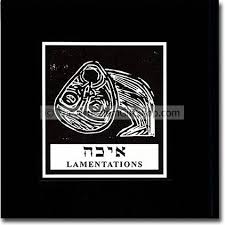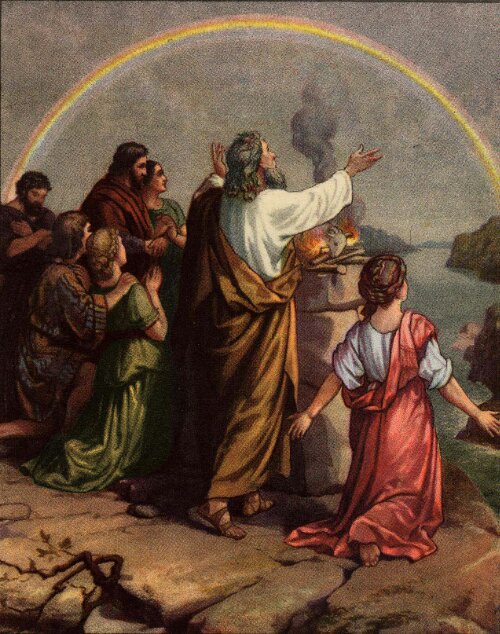 In teaching the book of Lamentations, I was (once again) struck by the structure of this little book in its Hebrew form. It seems by its very structure to shape the Hebrew reader/hearer. Of course, any reading of the text that simply notes structural issues and not the text proper would fall short, but I’m offering here only a brief look at these structural elements as one more move toward the theology of Lamentations which seems stated by the text proper (which I bring up to clarify the theological trajectory which cannot properly be stated apart from the text).
In teaching the book of Lamentations, I was (once again) struck by the structure of this little book in its Hebrew form. It seems by its very structure to shape the Hebrew reader/hearer. Of course, any reading of the text that simply notes structural issues and not the text proper would fall short, but I’m offering here only a brief look at these structural elements as one more move toward the theology of Lamentations which seems stated by the text proper (which I bring up to clarify the theological trajectory which cannot properly be stated apart from the text).
The first two chapters have triple bicolon strophes per verse (22 verses each) with each strophe beginning with the next letter of the acrostic acrostic. Chapter 3 (66 verses) has triple bicolons where each bicolon of that strophe begins with that letter of the acrostic and is signified by a new verse number. Chapter four (22 verses) is doubled bicolons per strophe each strophe beginning with the acrostic. And chapter five (22 verses) is a dissolution of any of these patterns: no acrostic, no continuity of bicolons, irregular strophes. It makes the crescendo of the lament at chapter three begin its decline into full breaking of any sense of control by chapter five. This is signified by the heightened use of the acrostic even though the count of bicolons is identical to the first two chapters. It is a move toward greater disorder of a judged people (a sort of return to Genesis 1.2’s tohu-wabohu or being “unfilled and unfruitful”). It functions as the pottery of Jeremiah 18 that is not to the intention of the potter and must be undone from its form.
The soul of the LORD’s people are laid bare. They are undone. Can anything be made of this or is this the end of all?
Taking up the text itself, this places them right where the LORD wanted them in order to bring life from death, hope from despair, and salvation from judgment. The earth might fall into disarray, all order into disorder, but the LORD’s kingdom is established, his reign is life, his rule: restoration.
19 You, Lord, reign forever;
your throne endures from generation to generation.
20 Why do you always forget us?
Why do you forsake us so long?
21 Restore us to yourself, Lord, that we may return;
renew our days as of old
22 unless you have utterly rejected us
and are angry with us beyond measure. (Lam.5.19-22 NIV 2011; bold for emphasis)
TERMS USED
Acrostic in the Scriptures refers to the successive 22 letters of the Hebrew alphabet beginning the first word and following in succession to the end of the alphabet.
Bicolon is a two line poetic unit.
Strophe refers to the larger thought unit of any number of smaller units (perhaps also called a “stanza”).
Tricolon is a three line poetic unit.
Pages
-
Recent Posts
- Isaiah 14 and Ezekiel 28: Could It Be Satan? A Couple of Responses November 8, 2024
- Four Reading Tips for Graduate Students August 23, 2024
- Four Reasons I Embrace Online Instruction as a Theological Educator July 7, 2024
- Five Reasons Pentecostals Should Read Karl Barth July 6, 2024
- A Theology of the Spirit in the Former Prophets: A Pentecostal Perspective (Audio Summary Presentation and Q&A) April 12, 2024
Tag Cloud
- baptism in the Holy Spirit
- Bible
- Biblical hermeneutics
- Biblical Interpretation
- books
- Christ
- Christ Jesus
- Church
- creation
- David
- God
- Hermeneutics
- history
- Holy Spirit
- Humor
- Jesus
- Joshua
- Judges
- Kings
- Life
- Literary
- literary interpretation
- literature
- Lord
- Love
- Matthew
- Missions
- Old Testament
- pastor
- Paul
- Pentecostal
- Pentecostalism
- pneumatology
- Preaching
- Psalms
- Samuel
- Saul
- Sermon
- Society for Pentecostal Studies
- Spirit
- Theology
- translations
- Trinity Bible College
- women
- women in ministry
Archives
Categories
Meta










